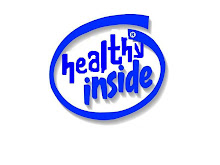Fresh, organic raw milk and dairy items are a treat – and a worthy treat at that. The consumption of organic raw milk and dairy products is linked to relief from asthma and eczema. Furthermore, organic raw milk is a living food replete with enzymes and beneficial bacteria that would otherwise be killed through pasteurization. In this post, I tell you more reasons to drink raw milk.
 Raw milk is a living food: Unlike pasteurized and ultra-high-temperature (UHT) pasteurized milk, raw milk is a living food. Several of milk’s natural components including beneficial bacteria, food enzymes, natural vitamins and immunoglobulins are heat-sensitive.
Raw milk is a living food: Unlike pasteurized and ultra-high-temperature (UHT) pasteurized milk, raw milk is a living food. Several of milk’s natural components including beneficial bacteria, food enzymes, natural vitamins and immunoglobulins are heat-sensitive.
Raw milk is rich in beneficial bacteria: As a living food, raw milk is rich in beneficial bacteria. These bacteria are critical to your health; indeed,beneficial bacteria are so critical to human health that you cannot live without them. like we cannot live without oxigen.
Raw milk is rich in food enzymes: As a living food, raw milk is also rich in natural food enzymes: lactase, lipase and phosphatase number among many of these natural enzymes. These enzymes help your body to better digest milk and better metabolize its vital nutrients.
Raw milk is rich in natural vitamins: The butterfat present in raw milk is rich in natural fat-soluble soluble vitamins, particularly preformed vitamin A, vitamin K and vitamin E. Raw milk is also rich in water-soluble vitamins like vitamin C and B-complex vitamins.
Raw butterfat is rich in Conjugated Linoleic Acid: Meat and milk from grass-fed animals is rich in fatty compound called Conjugated Linoleic Acid or CLA. Actually classified as a trans-fatty acid (but a good transfat!), CLA offers myriad myriad positive effects for those who consume it.
Raw milk supports small farmers, not feedlots: Pastuerization of milk was born out of necessity – as unhealthy cows from concentrated animal feed operations produce unhealthy milk.
Raw milk is not homogenized: Raw milk is not homogenized; rather, the beautiful fresh raw cream rises to the top to produce a lovely creamline. You can skim this cream for use in making butter or a beautiful panna cotta, or just shake the jar up to evenly distribute the cream into the milk for drinking.
Raw milk is easier to digest: Fresh, raw milk is easier on your stomach and digestive tract. Components naturally present in raw milk, but killed by pasteurization, enable you to digest raw milk better than cooked, pasteurized milk.
Raw milk clabbers: Leave a carton of pasteurized milk out on the counter for a day, and you’ll end up with a putrid, stinking glop. By contrast, raw milk will clabber as its beneficial lactic-acid producing bacteria proliferate and turn raw milk into a probiotic-rich, yogurt-like food.
Raw milk supports your local economy: 100% of the money you spend on your raw milk stays in your farmers pocket and in your local economy.
[Via The Nourished Kitchen – Click to read the full post]
 Raw milk is a living food: Unlike pasteurized and ultra-high-temperature (UHT) pasteurized milk, raw milk is a living food. Several of milk’s natural components including beneficial bacteria, food enzymes, natural vitamins and immunoglobulins are heat-sensitive.
Raw milk is a living food: Unlike pasteurized and ultra-high-temperature (UHT) pasteurized milk, raw milk is a living food. Several of milk’s natural components including beneficial bacteria, food enzymes, natural vitamins and immunoglobulins are heat-sensitive.
Raw milk is rich in beneficial bacteria: As a living food, raw milk is rich in beneficial bacteria. These bacteria are critical to your health; indeed,beneficial bacteria are so critical to human health that you cannot live without them. like we cannot live without oxigen.
Raw milk is rich in food enzymes: As a living food, raw milk is also rich in natural food enzymes: lactase, lipase and phosphatase number among many of these natural enzymes. These enzymes help your body to better digest milk and better metabolize its vital nutrients.
Raw milk is rich in natural vitamins: The butterfat present in raw milk is rich in natural fat-soluble soluble vitamins, particularly preformed vitamin A, vitamin K and vitamin E. Raw milk is also rich in water-soluble vitamins like vitamin C and B-complex vitamins.
Raw butterfat is rich in Conjugated Linoleic Acid: Meat and milk from grass-fed animals is rich in fatty compound called Conjugated Linoleic Acid or CLA. Actually classified as a trans-fatty acid (but a good transfat!), CLA offers myriad myriad positive effects for those who consume it.
Raw milk supports small farmers, not feedlots: Pastuerization of milk was born out of necessity – as unhealthy cows from concentrated animal feed operations produce unhealthy milk.
Raw milk is not homogenized: Raw milk is not homogenized; rather, the beautiful fresh raw cream rises to the top to produce a lovely creamline. You can skim this cream for use in making butter or a beautiful panna cotta, or just shake the jar up to evenly distribute the cream into the milk for drinking.
Raw milk is easier to digest: Fresh, raw milk is easier on your stomach and digestive tract. Components naturally present in raw milk, but killed by pasteurization, enable you to digest raw milk better than cooked, pasteurized milk.
Raw milk clabbers: Leave a carton of pasteurized milk out on the counter for a day, and you’ll end up with a putrid, stinking glop. By contrast, raw milk will clabber as its beneficial lactic-acid producing bacteria proliferate and turn raw milk into a probiotic-rich, yogurt-like food.
Raw milk supports your local economy: 100% of the money you spend on your raw milk stays in your farmers pocket and in your local economy.
[Via The Nourished Kitchen – Click to read the full post]

